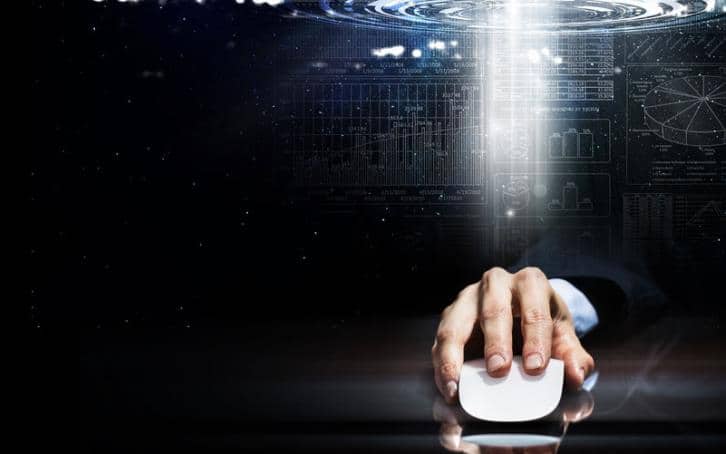Decades have passed and now, the market has become more competitive and challenging as compared to what it was back then. Digitalization has made it possible for marketers from different horizons of today’s market to be connected with their consumers in an entirely new way, something which people never imagined. And it wouldn’t be too wrong to say that the marketers are now capable of taking their customers to a virtual world where they can revel in the realistic view of the products.
Apart from being innovative, the market is becoming more engaging, interesting, and worth a place to spend your precious time. Moreover, the incorporation of the concept of personalization has fuelled the need to introduce new ways of attracting the audience. And that’s why almost eighty percentiles of different companies and industries are shifting their focus on a new marketing strategy– the virtual reality marketing.
What Is Virtual Reality?
The image, which you see in the mirror, is a virtual image and that’s why despite it being an illusion, it looks so real. This illusionary concept is now being utilized and programmed in a way where you can view different objects in a simulated environment such that they will appear as real ones.
Incorporating the audio and the video feedbacks in a loop, which will trigger the sensations in the viewer proved to be quite difficult for the programmers. But, with complex algorithms and programming concepts, they were finally able to create a world where you can view the three-dimensional forms of the objects you want in the most realistic way, but you cannot touch them. After all, they are fictitious, and the images don’t have any physical existence except the fact that they are simulated in a way where you can feel their virtual existence. The concept is basically implemented using the knowledge of artificial intelligence and hence, it is a sort of probabilistic approach to determine the various factors about the consumer-marketer relationship.
What is the contribution of the virtual reality in the market world?

As the market is growing in a dramatic way, the marketers are using the approaches of probability and virtual science in order to simulate a predictive environment. These environments are based on some guessed thoughts, which are shaped with the knowledge of the present values, thus allowing the consumers to walk through a dreamland where everything will seem to be real.
Let’s take the example of the famous virtual game of Pokemon Go. In that video game, if you are playing as a player, then you will have to walk on the streets and along with you, the player of the game will move. Now, when you will be playing the game, the simulation of the virtual world into your real world will make you feel like you are actually present in the world of the game and you are one who is playing and catching the Pokemon.
The very first concept of the virtual reality was actually introduced to the games and the 3D images. Slowly, this technology was incorporated in other markets where the brand owners were able to give a realistic image of their own band to their consumers and even the other fraction of the audience who were yet to use their brand.
It’s sort of personalizing the world where the marketers created a virtual environment for their brand users such that they will enter a different dimensional realm and experience everything about that concerned brand with all their senses. For example, you are looking at a car on your mobile and suddenly the company gives you an offer to try their virtual reality app.
Once you will try it, you will enter a dimension where you will find the real structure of the car standing in front of you. So, in a virtual reality environment, no matter what object you are choosing, you will be able to view it in a three-dimensional approach, almost in a way where you will feel it be real and you to be in some other world.
[insert page=’augmented-reality-what-marketers-need-to-know’ display=’single-related-article-02.php’]
What is the best uses of virtual reality in the marketing strategy?
Many companies have already implemented simulated VR equipment in their businesses to give a realistic approach to their consumers. So, let’s have a look at the best five examples were different companies have used the virtual reality as their content marketing strategy.
1. TOMS shoes in the field of retail
TOMS has given out about sixty million pairs of shoes to those people and children who are in need of them. The company gives an identical pair of shoes that has been bought by someone else at any of its retail store. And to give a live experience to its customers, the heads of the company started a campaign named ‘A walk in their shoes’.
In this campaign, the different buyers sit on a virtual chair and then he or she is taken on a journey to experience the people who are benefitting from their purchase at TOMS. According to the founder Blake Mycoskie, the implementation of virtual reality in their business has been a wise decision as now they are able to show their customers how their purchases are helping others.
2. Patron Spirits in the field of beverages
Whenever you drink something, you always have this innate doubt about the purity of the beverage. So, Patron Spirits created a bee which is a drone loaded with seven different GoPros. The bee will take you to the virtual world of the Hacienda distillery and the headquarters of the company in Mexico. This step has given an advantage to Patron to show their customers how everything is done at their production unit in a detailed, realistic way.
3. Marriott International in the field of event planning
Marriott International is one of the most famous hotel chains which even provides venues for personal and business programmes. With the incorporation of virtual reality, the company is now able to give a walk through the event where the customers, as well as the event planners, can have a detailed look at how things will be in the real-life event, starting from the customized room to the catering area.
4. Vroom in the field of automobile
Vroom has made it possible for the car lovers to experience what it looks like to be near the car of your choice and to experience everything sitting in front of your computer. Here, the user will use a VR goggle to witness every single part of the virtual car model, hear the engine roaring, and even have a test drive by sitting in the home.
5. TopShop in the field of the fashion show
Here, this fashion retailer brand partnered with Ignition to create a VT headset which will provide its customers with a virtual experience of fashion shows to know more about the dress. So, you can see the dresses and the models walking down the ramp in all their glory and you can also watch the celebrities gossiping amongst them.
No one can ever deny that the marketers are considering the virtual reality concept to actually transform the current image of the entire market for the good. In fact, this conclusion has been drawn from some of the live examples where different companies have implemented the concept of this amazing technology in increasing their sales, in drawing more audience, and in defining a new statement for their brand.





